I’m not wearing anything special, certainly not whatever stereotypical image the word “hula” might arouse; there are no grass skirts or coconut bikinis here. Neither were historically a part of Native Hawaiian traditions. In this hula class we’re not swinging our hips, just moving our arms and clapping wooden batons together. As the kid who could never master rubbing their tummy while patting their head, I am failing to keep up. I won’t remember the moves in 30 seconds. But I will retain a much deeper lesson.
Tourism is Hawai‘i’s largest industry. In 2019 it brought 10 million visitors to the islands, supporting 216,000 jobs and generating $17.75 billion (and raising $2 billion in state taxes). More than half of those visitors spent time on O‘ahu, the most visited island, overtaxing the local environment and, critics say, depleting the quality of life for residents and tourists alike. During the pandemic, locals got a taste of their islands without so many visitors and many aren’t eager to see the old model return.
“As a whole, in Hawai‘i, we are looking for a more respectful and responsible visitor, one that comes with a deep respect for our culture and our place,” Mālia Sanders, executive director of the Native Hawaiian Hospitality Association, said in a statement to the press last year. Sanders and others in O‘ahu believe there can be a post-colonial, Indigenous-focused, ecologically sustainable form of travel that puts the land first and doesn’t ask locals to be in servitude to visitors.
The Hawai‘i Tourism Authority has adopted the philosophy Mālama Ku‘u Home (Caring for My Beloved Home) and started investing in community-based efforts to protect and enhance the state’s unique treasures: the beautiful beaches, towering mountains, freshwater streams; the plants, animals, and birds that live here; and the unique Hawaiian culture that evolved here. The gamble is that by fostering those resources — and creating authentic experiences around them — the islands will draw the kind of travelers willing to pay for the privilege of visiting Hawai‘i while still respecting its traditions.
That’s where hula comes in. The traditional dance we’re learning is also a sacred story about Hawai‘i’s birds, flowers, mountains, and seas. The practice shares ancestral Hawaiian knowledge, physically connecting dancers to a form of education that predates the written word and engages mind and body. After your hands have made the motion of Hawaiian birds and your chants evoked the fragrance of native hibiscus flowers, can you trample them when you leave? Learning the hula makes you less of a tourist and more of a guest.
We are at this moment guests of Outrigger Reef Waikiki Beach Resort’s new A‘o Cultural Center, part of the hotel’s recent $80 million renovations, where Luana Maitland, director of cultural events & activities, shares her cultural knowledge (and displays some of her personal collections).
 credit Jacob Anderson-Minshall
credit Jacob Anderson-Minshall
Elsewhere in the hotel sits Kalele, a century-old outrigger canoe restored by the Friends of Hōkūle‘a & Hawai‘iloa. Guests can take in local Hawaiian music while noshing at Kani Ka Pila Grille, and artwork curated by the Bishop Museum adorns hallways and guest suites. Our suite features portraits of Hawaiian royalty and a map of O‘ahu, which incorporated the Native Hawaiian tradition of ahupua’a, the division of land running from the top of a mountain to the sea.
 Kualoa Ranch's Kaaawa Valley credit Warren Ishii/Getty Images
Kualoa Ranch's Kaaawa Valley credit Warren Ishii/Getty Images
That lesson is furthered the following day during a koa tree planting tour at Kualoa Ranch a 4,000-acre private nature reserve, working cattle ranch, and setting of several Jurassic Park films. During the three-hour UTV tour — which took us deep into the Kualoa, Ka‘a‘awa, and Hakipu‘u valleys to learn about Hawai‘i’s ecology — our guide shares that within each ahupua’a were all the resources Hawaiians needed to thrive. The tradition was essential to the sustainability of the island when O‘ahu was home to up to a million Native Hawaiians. Now the population of over one million (and millions of annual visitors) feels far from sustainable.
According to HTA, “The reciprocal nature of our relationship to land is that we care for our natural resources and in return the land will care for us. In this symbiotic relationship, as people dedicate time and resources to the well-being of the land, the residents and visitors of this land will thrive.”
We’re dedicating our day to planting a koa tree in the traditional Hawaiian way to be part of the regenerative travel movement; to not just avoid damaging a destination through low-impact activities but to play a part in restoring or revitalizing it.
The native canopy tree koa is prized for its hard wood, from which Hawaiians hand-carved wa‘a (canoes) and mea kaua (weapons). That durability was also present in the living koa, allowing it to withstand fierce winds and protect the undergrowth below. We choose and name our koa sapling. It is stick thin and seems fragile as I cradle it, bouncing along in the back of the UTV. By the end of the tour, we’ve given it a good start at rooting in its new home in the shadow of a zipline course. Our tree, the first in this new initiative, will become part of a hardwood forest that will displace the zipline.
 Our freshly planted koa tree below ziplines Jacob Anderson-Minshall
Our freshly planted koa tree below ziplines Jacob Anderson-Minshall
On our tour of the valleys, our guide explains the difference between native, invasive, and canoe species. Many of the natives are endemic and not found anywhere else, and the canoe plants were brought by Polynesians when they first came to the islands around 1090 A.D. Invasives came post-Western contact in 1778 and have contributed to the endangerment of many native species.
Later Ha‘aheo Zablan, general manager at Kaimana Beach Hotel and a member of the LGBTQ+ community, reiterates what our guide told us: one of the canoe plants is particularly important. “It’s literally a root of our culture and our people,” Zablan explains. Kalo (taro), the root of which is pounded and eaten as poi, was a traditional diet staple and cultivated across the islands.
 Harvesting taro Heather Goodman/Hawai‘i Tourism Authority
Harvesting taro Heather Goodman/Hawai‘i Tourism Authority
The closeness of the relationship between Hawaiians and the kalo plant is exemplified by its origin story. It is said that kalo first sprouted from the spot where a stillborn child of the gods was buried. That child’s younger brother, Hāloa, fathered the Hawaiian people, who were taught of their familial obligation to care for their sibling.
Stories like these help establish the relationships and obligations Hawaiian people have to each other as well as to the land. These relationships are like webbed fishing nets that tie everything together. We are all connected and dependent upon one another for survival.
Zablan says relationships make it easier to navigate difficult conversations. And there are difficult conversations being had. This February, two bills were introduced in the state legislature that would effectively eliminate the Hawai‘i Tourism Authority and turn management of the industry over to those eager to see the number of tourists grow ever higher in the coming years. The soul of O‘ahu is at stake.
From Your Site Articles
Related Articles Around the Web
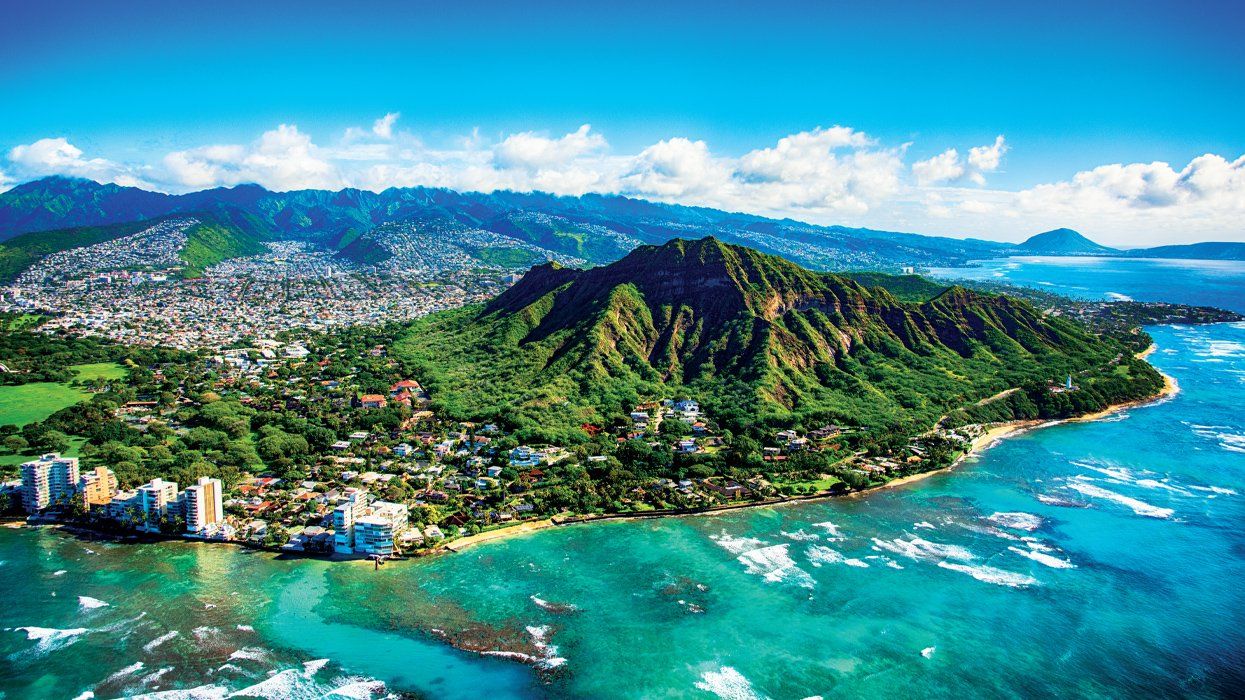




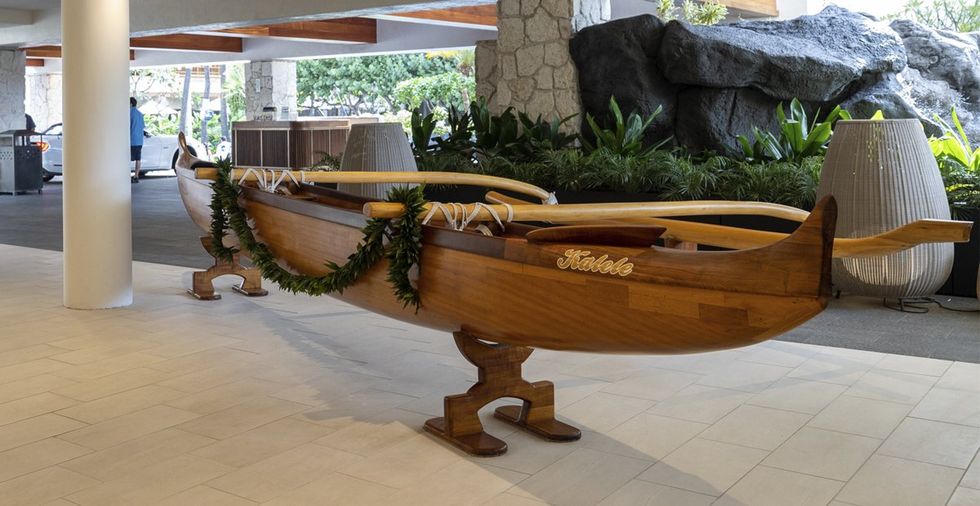 credit Jacob Anderson-Minshall
credit Jacob Anderson-Minshall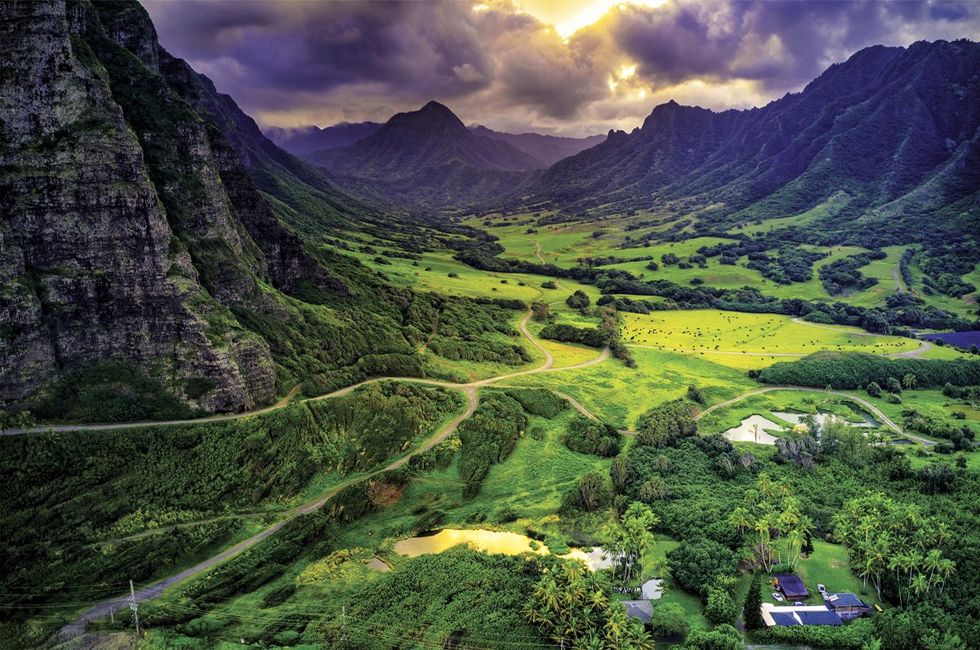 Kualoa Ranch's Kaaawa Valley credit Warren Ishii/Getty Images
Kualoa Ranch's Kaaawa Valley credit Warren Ishii/Getty Images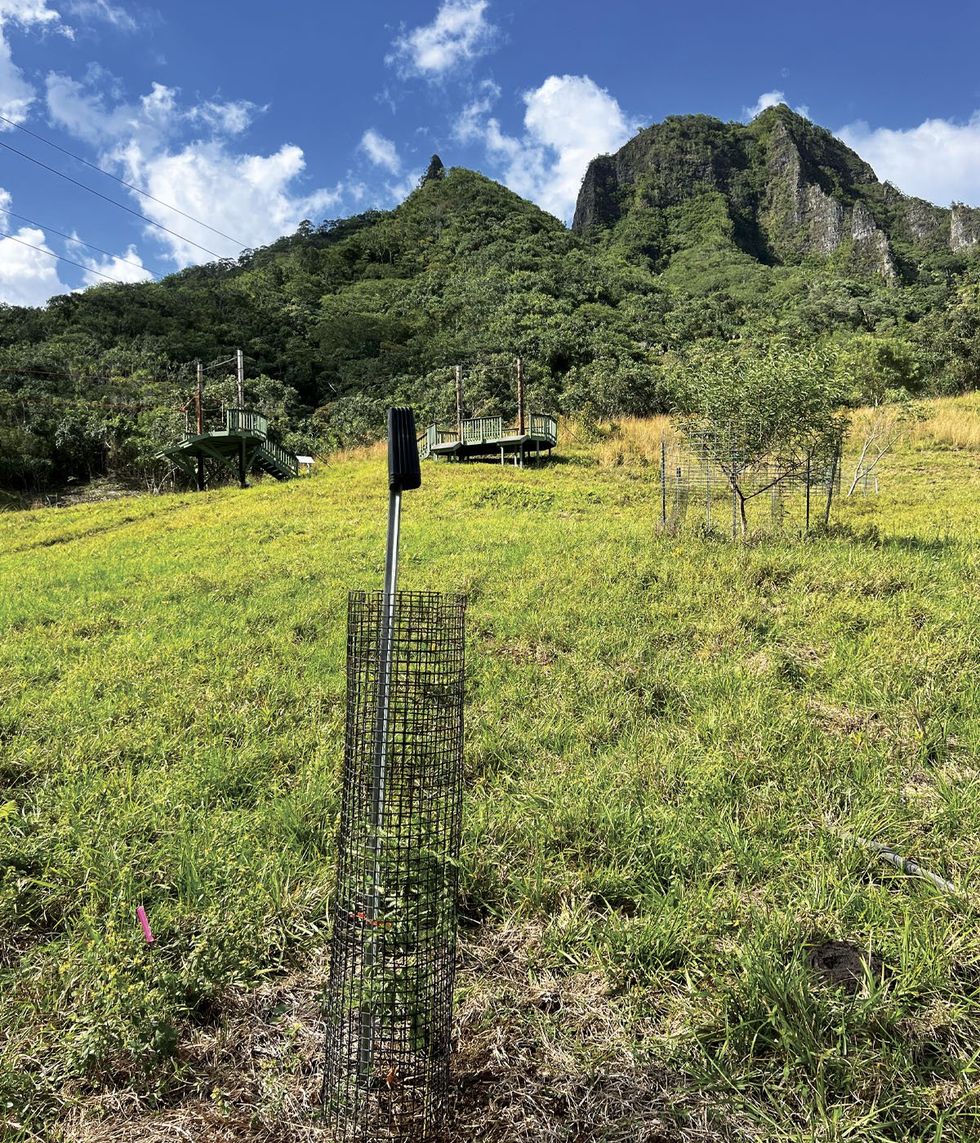 Our freshly planted koa tree below ziplines Jacob Anderson-Minshall
Our freshly planted koa tree below ziplines Jacob Anderson-Minshall 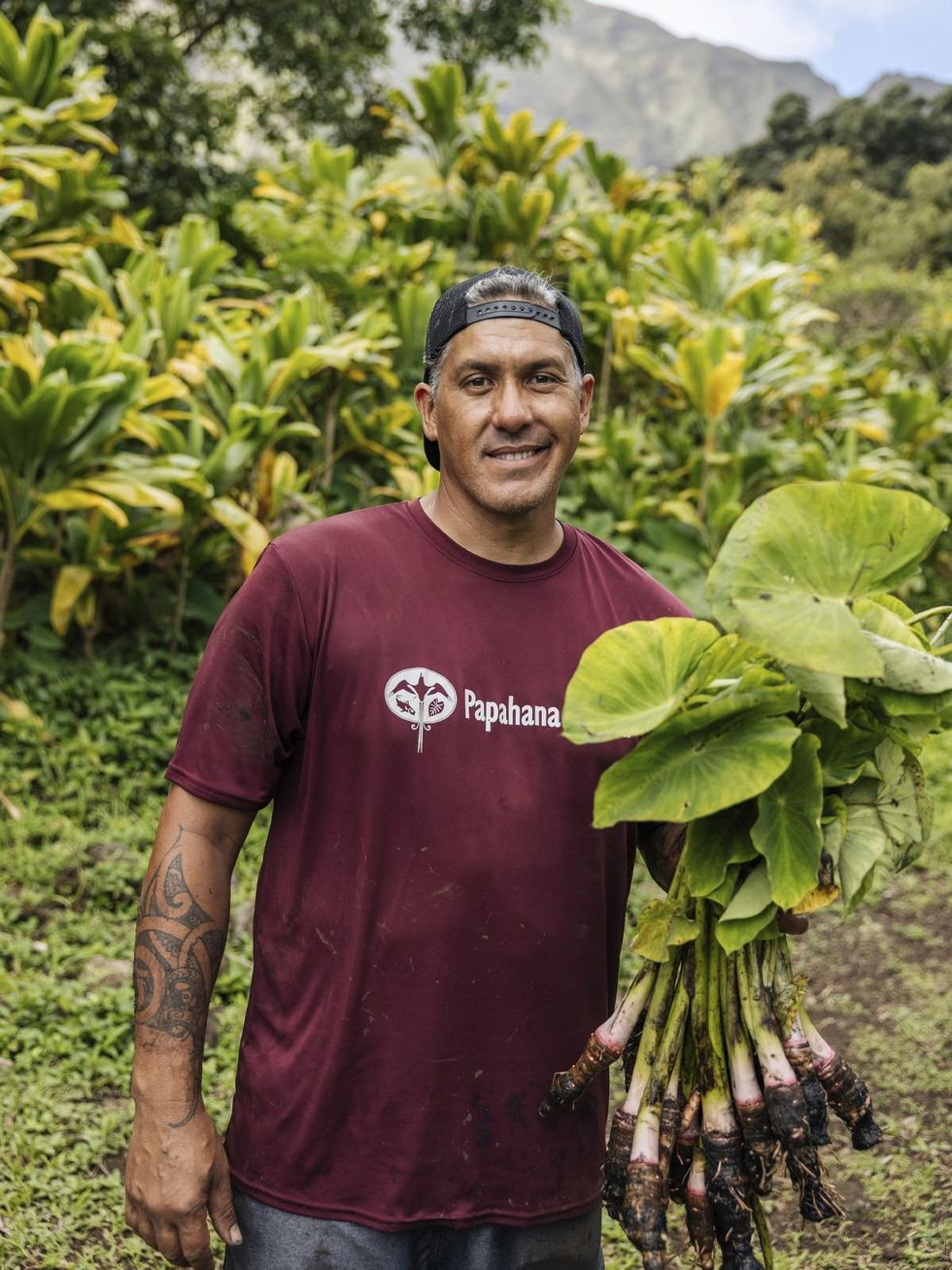 Harvesting taro Heather Goodman/Hawai‘i Tourism Authority
Harvesting taro Heather Goodman/Hawai‘i Tourism Authority






































































